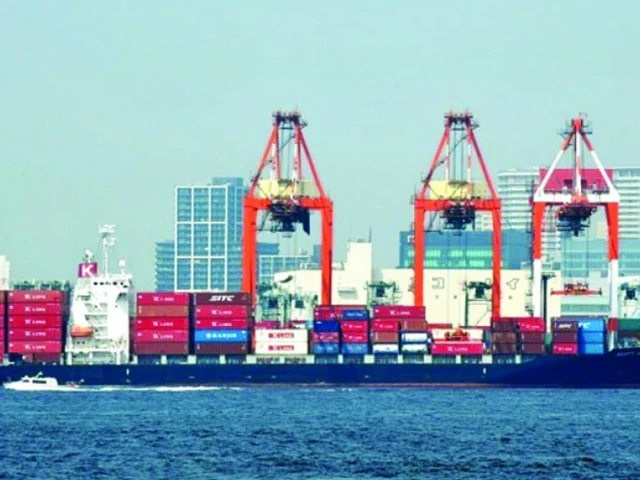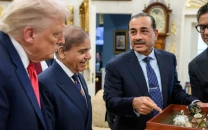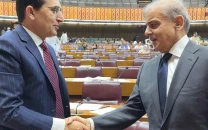Rethinking our industrial strategy
This is not about beating India; it's about being present as world reshuffles sourcing decks

The re-emergence of Donald Trump's protectionist trade agenda has once again stirred global markets – this time with a thunderclap. In a sweeping move, the US president, now campaigning with a vengeance, has imposed a 50% tariff on key Indian exports, ranging from textiles and auto components to pharmaceuticals and food products.
The justification? India's expanding trade with Russia and what the Trump camp calls "unfair manipulation of trade advantages." The move has triggered tremors across the markets.
While the impact on India is direct and quantifiable, analysts project a drop of up to 60% in US-bound exports and a potential 0.9-percentage-point hit to GDP, the ripple effects across the region are far more nuanced. For Pakistan, the development poses a curious paradox: a potential strategic opening buried under layers of inertia.
Let's be clear, Pakistan is not in the position to replace India as a trade partner to the US. Not now, and not anytime soon. Our export volume is modest, our policy environment is inconsistent, and our manufacturing capacity, especially in value-added goods, remains underutilised. But moments like these are not about replacing giants, they are about filling gaps, capturing niches, and sending a message: Pakistan is back in the conversation.
Consider this – when Trump imposed a 25% tariff on Indian Basmati in 2019, Pakistani exporters saw a marginal but measurable bump in US orders. With a 50% tariff now in place, the price competitiveness of Indian products will be severely blunted. This opens up a window for Pakistani garments, leather products, rice, surgical instruments, and even sports goods to penetrate markets that may now be reconsidering their sourcing relationships.
But opportunity doesn't convert itself. The real question is: will Pakistan move? To do so, it must first look inward. The high cost of doing business, erratic energy supply, delays in refunds, and bureaucratic hurdles continue to choke export potential. While regional rivals like Bangladesh and Vietnam have secured preferential tariffs and scaled up logistics efficiency, Pakistan remains caught in an outdated trade playbook. We must do something about it and must do it quickly.
Second, there is an urgent need for high-level trade diplomacy. Pakistan should be knocking on Washington's door, not with aid requests, but with market access propositions. We must push for a revival of GSP privileges or even explore bilateral sector-specific frameworks with the US. The argument is simple: with India's trade relationship strained, Pakistan can offer reliability, capacity, and geopolitical alignment.
Third, exporters themselves must upgrade. American buyers are no longer just looking at price; they're looking at environmental compliance, social responsibility, and consistency. It's time our industries adapt, not just for optics but for long-term survival. We need ISO-certified factories, transparent labour practices, and scalable systems. Without these upgrades, it will be difficult to tap this window of opportunity.
The tariff disruption is not a one-off. It's a signal of deeper changes in global trade flows, away from overconcentration in India and China, and towards diversification. If Pakistan positions itself wisely, it could ride this shift, not just to gain orders, but to fundamentally rewire its export map.
And yet, there are risks. A deeper US-India trade conflict may provoke New Delhi to align more closely with China or the BRICS bloc. This could recalibrate regional trade corridors and further isolate Pakistan unless it plays a smarter diplomatic hand. Moreover, if Pakistan remains slow, the vacuum will be filled by faster-moving nations with better logistics and friendlier trade regimes.
So, what should Pakistan do?
1-Launch a "Trade Opportunity 2025" strategy focusing on US-oriented exports. 2-Hold emergency consultations with textile, leather, and rice exporters to assess readiness. 3-Mobilise embassies and trade missions in Washington, New York, and Houston to open commercial dialogues with key US buyers. 4-Fix the fundamentals – power, logistics, taxation, and customs. 5-Create a short-term export incentive package specifically for US-bound sectors.
This is not about beating India. It's about being present when the world is reshuffling its sourcing decks. Every trade cycle has moments of disruption that reward the agile. Pakistan, for once, has the chance to be in the right place at the right time – if only it has the foresight to act.
Trump's tariffs may be India's headache, but they could be Pakistan's overdue wake-up call. The only question is: are we alert enough to hear it?
THE WRITER IS A SENIOR BANKER AND TEACHES ECONOMICS



















COMMENTS
Comments are moderated and generally will be posted if they are on-topic and not abusive.
For more information, please see our Comments FAQ